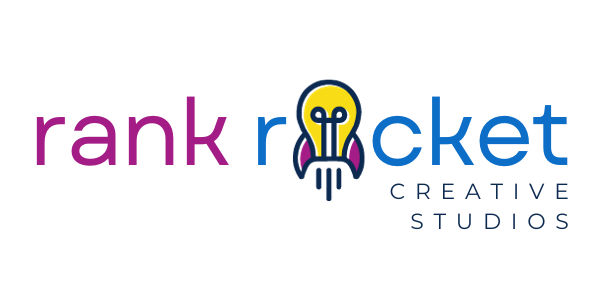Mastering Inbound Marketing: A Comprehensive Guide for Business Owners

In today's competitive business landscape, effective marketing strategies are crucial for sustained growth. One powerful approach that has gained prominence is inbound marketing. In this comprehensive guide, we will delve into the world of inbound marketing, exploring its principles, benefits, and strategies to help business owners harness its potential. As a trusted partner in inbound marketing solutions, MediaVantage is here to provide valuable tips, tricks, and education to help you succeed.
I. Understanding Inbound Marketing
Inbound marketing is a customer-centric approach that focuses on attracting, engaging, and delighting customers. By creating valuable content and experiences tailored to your target audience's needs, you can build trust and establish long-lasting relationships. In contrast to traditional outbound marketing methods, inbound marketing involves strategies that pull customers in rather than interrupting them.
II. Building a Strong Foundation
Identifying Target Audience and Buyer Personas:
To effectively reach your audience, you need to understand who they are, what their needs and pain points are, and how your product or service can solve their problems. Develop detailed buyer personas to guide your marketing efforts. Buyer personas are fictional representations of your ideal customers. Consider factors such as age, gender, location, interests, challenges, and goals. For instance, if you run a fitness apparel business, one of your buyer personas might be "Active Annie," a 30-year-old yoga enthusiast who values sustainable and high-quality workout clothing.
Creating Compelling Content for Different Buyer's Journey Stages:
Craft relevant and engaging content tailored to each stage of the buyer's journey, from awareness to consideration and decision-making. Utilize blog posts, videos, eBooks, and infographics to educate and inspire your audience.
Developing a Responsive and User-Friendly Website:
Your website is the central hub of your inbound marketing efforts. It should be visually appealing, easy to navigate, and optimized for a seamless user experience. Ensure that your website loads quickly and is mobile-friendly since an increasing number of users browse the internet on their smartphones and tablets. Implement clear navigation menus, intuitive search functionality, and engaging visuals to enhance user engagement. Use compelling and persuasive copywriting to convey your unique value proposition and encourage visitors to take action. Incorporate clear and prominent calls-to-action (CTAs) strategically placed throughout your website to guide visitors towards desired conversions, such as signing up for a newsletter, downloading a resource, or making a purchase.
III. Generating Traffic
Optimizing for Search Engines (SEO):
Search engine optimization (SEO) plays a vital role in driving organic traffic to your website. Conduct keyword research to identify the terms and phrases your target audience is using to search for relevant topics. Incorporate these keywords strategically into your website's content, meta tags, headings, and URLs. Create high-quality, informative, and engaging content that aligns with user search intent. Optimize your website's loading speed, improve mobile responsiveness, and ensure a smooth user experience. Build backlinks from authoritative websites within your industry to boost your search engine rankings.
Example : Suppose you own a home renovation company. Through keyword research, you identify that "kitchen remodeling ideas" and "bathroom renovation tips" are popular search terms. You optimize your website's content by creating blog posts that provide detailed insights on these topics. You ensure that your meta tags, headings, and URLs contain relevant keywords, such as "10 Inspiring Kitchen Remodeling Ideas for Your Dream Home."
Leveraging Social Media Platforms:
Social media platforms provide an excellent opportunity to engage with your target audience, increase brand visibility, and drive traffic to your website. Identify the platforms where your audience is most active and create a strong presence there. Share valuable and relevant content, such as blog posts, infographics, videos, and industry news. Encourage social sharing and engagement by asking questions, running contests, and responding to comments. Utilize social media advertising to target specific demographics and interests to amplify your reach and drive traffic to your website.
Example: If you own a fashion boutique, you may identify Instagram and Pinterest as platforms where your target audience is highly active. Create visually appealing posts featuring your latest fashion collections, style tips, and outfit inspirations. Engage with your followers by encouraging them to tag your brand in their posts and use relevant hashtags. Run a contest where participants can win a shopping spree at your boutique by sharing their favorite fashion trends and tagging friends.
Content Distribution Channels:
Extend your content's reach by leveraging content distribution channels such as guest posting, syndication platforms, and influencer collaborations. Target high-authority websites and industry-specific platforms to expand your audience.
By implementing effective strategies to generate traffic, such as optimizing for search engines, leveraging social media platforms, and utilizing content distribution channels, you can increase your website's visibility, attract a larger audience, and drive targeted traffic to your inbound marketing efforts.
IV. Converting Leads into Customers
Designing Effective Landing Pages and Compelling CTAs:
Landing pages are crucial for converting website visitors into leads. Design landing pages that align with the content they clicked on and provide a clear value proposition. Use persuasive copy, captivating visuals, and a strong call-to-action (CTA) to encourage visitors to take the desired action, such as filling out a form or making a purchase. Keep the form fields concise and relevant to reduce friction and increase conversion rates.
Example: Suppose you offer a software tool for project management. Your landing page should highlight the key features, benefits, and unique selling points of your tool. Use compelling visuals to showcase the tool in action and include a CTA like "Start Your 14-Day Free Trial" or "Get a Demo."
Implementing Lead Nurturing Strategies and Email Marketing Campaigns:
Once you capture leads, it's essential to nurture them through targeted email marketing campaigns. Segment your email list based on demographics, behavior, or preferences to deliver personalized content that resonates with each segment. Send relevant and valuable content that addresses their pain points, provides solutions, and showcases your expertise. Use marketing automation tools to schedule and automate email sequences, follow-ups, and personalized messaging based on user interactions.
Example: If you own a skincare brand, you can segment your email list based on customer preferences such as skin type (dry, oily, sensitive) or skincare concerns (acne, aging, hydration). Send tailored emails that offer skincare tips, product recommendations, and exclusive promotions based on the specific needs of each segment.
Using Marketing Automation to Streamline Lead Management:
Marketing automation tools can streamline and optimize lead management processes. Implement lead scoring to identify and prioritize high-quality leads based on their engagement level with your content and website. Nurture leads with automated workflows triggered by specific actions or behaviors. Use personalized dynamic content to create a more personalized experience for your leads. Provide your sales team with valuable insights and data on lead behavior and interactions to improve their conversion rates.
Example: Suppose you offer a subscription-based meal delivery service. Using marketing automation, you can assign lead scores based on actions such as opening emails, visiting specific product pages, or adding items to their cart. High-scoring leads can then trigger automated workflows that send personalized offers or discounts to incentivize them to make a purchase.
By implementing effective strategies to convert leads into customers, such as designing effective landing pages, implementing lead nurturing email campaigns, and using marketing automation tools, you can guide your leads through the buyer's journey, build trust, and increase your conversion rates.
V. Measuring and Analyzing Results
Key Performance Indicators (KPIs) for Inbound Marketing Success:
To measure the effectiveness of your inbound marketing efforts, it's crucial to define key performance indicators (KPIs) that align with your business goals. These metrics will help you track progress, identify areas of improvement, and make data-driven decisions. Some common inbound marketing KPIs include website traffic, conversion rates, email open rates, social media engagement, and customer acquisition cost (CAC).
Example: If you have an e-commerce store, your KPIs may include metrics such as website traffic, conversion rate, average order value, and customer lifetime value. These metrics will give you insights into the overall performance of your inbound marketing efforts and help you gauge the success of your campaigns.
Implementing Analytics Tools and Tracking Systems:
Use robust analytics tools such as Google Analytics, marketing automation platforms, and CRM systems to track and measure the performance of your inbound marketing activities. Set up conversion tracking to monitor the effectiveness of your landing pages, CTAs, and email campaigns. Utilize UTM parameters to track the source and medium of your website traffic. Leverage heatmaps and user behavior tracking tools to gain insights into how visitors engage with your website and content.
Example: By using Google Analytics, you can track the performance of your inbound marketing campaigns, including metrics such as website traffic, bounce rate, conversion rate, and goal completions. You can also set up goals and funnels to track specific actions taken by users, such as completing a purchase or filling out a contact form.
Analyzing Data and Iterating on Strategies:
Regularly analyze the data gathered from your analytics tools to gain valuable insights into the performance of your inbound marketing efforts. Identify trends, patterns, and areas of improvement. Monitor the performance of different channels, campaigns, and content assets. Make data-driven decisions to optimize underperforming campaigns, refine your strategies, and allocate resources effectively to maximize ROI. Continuously iterate on your approach based on the insights gained from data analysis.
Example: Suppose you're running an inbound marketing campaign promoting a new e-book. By analyzing the data, you find that the conversion rate is low for a particular landing page. You then identify that the form on the landing page has too many fields, resulting in visitor drop-offs. Based on this insight, you optimize the form by reducing the number of fields and see an increase in conversion rates.
By consistently measuring results, analyzing data, and making data-driven decisions, you can refine your inbound marketing strategies, optimize campaigns, and allocate resources effectively. This iterative approach will help you improve the performance of your inbound marketing efforts and achieve better results.
VI. Staying Ahead with Ongoing Optimization
Email Marketing and Newsletter Campaigns:
Email marketing remains one of the most effective ways to engage with your audience on an ongoing basis. Create a newsletter that delivers valuable content, updates, and promotions directly to your subscribers' inboxes. Personalize your emails based on segmentation, and tailor the content to match their interests and preferences. Encourage interaction by including call-to-action buttons, social sharing options, and feedback surveys.
Example: Suppose you run a travel agency. Your newsletter can include travel tips, destination highlights, exclusive offers, and customer stories. Segment your audience based on their travel preferences (e.g., adventure travel, luxury vacations) and send targeted newsletters with content that matches their interests.
Social Media Engagement and Community Building:
Social media platforms offer an opportunity to engage with your audience, build a community, and foster brand loyalty. Regularly post relevant and engaging content that sparks conversation and encourages interaction. Respond to comments, messages, and mentions promptly. Host contests, polls, and Q&A sessions to encourage participation. Use social listening tools to monitor brand mentions and gather feedback, and leverage user-generated content to showcase customer experiences.
Example: If you have a fitness app, create a Facebook group or an Instagram community where users can connect with each other, share their progress, ask questions, and receive support. Share motivational quotes, workout tips, and success stories to keep the community engaged.
Live Webinars and Online Events:
Hosting live webinars and online events allows you to provide valuable educational content, engage with your audience in real-time, and establish your brand as an industry leader. Choose topics that align with your audience's interests and pain points. Encourage participation through Q&A sessions, polls, and interactive activities. Record the sessions and make them available for on-demand viewing to cater to a wider audience.
Example: If you're a software company offering project management tools, host a live webinar on "Efficient Project Management Strategies for Remote Teams." Share tips, best practices, and real-world examples during the session and provide attendees with an opportunity to ask questions and engage with your experts.
Chatbots and Live Chat Support:
Implementing chatbots and live chat support on your website can enhance customer experience and provide instant assistance. Chatbots can handle basic inquiries, provide information, and guide users to relevant resources. Live chat support enables real-time interactions, allowing customers to ask questions and receive immediate responses. Be proactive in addressing customer concerns, resolving issues, and providing personalized assistance.
Example: If you have an e-commerce store, use a chatbot to greet visitors, help them navigate the website, and provide product recommendations based on their preferences. Offer live chat support during business hours to assist customers with order inquiries, shipping updates, and product support.
By providing ongoing engagement and support to your audience through email marketing, social media engagement, live webinars, and chat support, you can nurture customer relationships, build brand loyalty, and establish your business as a trusted resource in your industry.
VIII. Conclusion
Inbound marketing is a powerful strategy that can attract, engage, and convert potential customers into loyal advocates for your business. By implementing the key tactics discussed in this blog post, you can create a comprehensive inbound marketing approach that drives results and helps your business grow.
From attracting traffic through search engine optimization (SEO) and social media platforms to converting leads into customers with compelling landing pages and email marketing campaigns, each step of the inbound marketing process is essential for success. Additionally, measuring results and analyzing data allows you to fine-tune your strategies and optimize your efforts for maximum impact.
At MediaVantage, we understand the importance of inbound marketing in today's digital landscape. We specialize in helping businesses like yours leverage the power of inbound marketing to drive growth and achieve their goals. Our team of experts can assist you in implementing effective inbound marketing strategies tailored to your unique needs, industry, and target audience.
Ready to take your business to the next level with inbound marketing? Contact us today to schedule a consultation and learn how MediaVantage can help you attract more leads, convert them into loyal customers, and ultimately drive your business forward.



